#Gur-e-Amir
Explore tagged Tumblr posts
Text
La storia di Samarcanda: Dalle antiche origini sogdiane all’epoca d’oro timuride
Un affascinante viaggio nel tempo attraverso uno dei centri più antichi dell’Asia Centrale, luogo di incroci culturali e culla di straordinarie testimonianze architettoniche.
Un affascinante viaggio nel tempo attraverso uno dei centri più antichi dell’Asia Centrale, luogo di incroci culturali e culla di straordinarie testimonianze architettoniche. Samarcanda è una delle più antiche città dell’Asia Centrale, con radici che affondano nel VI secolo a.C. Dapprima centro della civiltà sogdiana, divenne successivamente un nodo cruciale lungo la Via della Seta, favorendo lo…
#Amir Timur#Archeologia#Architettura#Arte islamica#Asia Centrale#Città antica#Città leggendarie#Civilizzazione#Commercio#Culla di civiltà#Cultura e conoscenza#cultura islamica#Dinastie#Epoca islamica#Gur-e-Amir#Imperi#Influenze persiane#Madrasah#Mausolei#Monumenti Storici#moschee#Patrimoni dell’Umanità#patrimonio storico#patrimonio UNESCO#Registan#ricerche storiche#Rotte commerciali#Samarcanda#Scambi culturali#siti archeologici
0 notes
Text

Gur-e-Amir, the mausoleum of Timur/Tamerlane (1404, renovated in the 20th century).
Samarkand, Uzbekistan.
© Roberto Conte (2023)
#architecture#architecturephotography#architettura#architektur#timur#samarkand#samarcanda#uzbekistan
90 notes
·
View notes
Text
5 Popular Uzbekistan cities to visit in your Next holiday
Uzbekistan, a gem of Central Asia, boasts a rich tapestry of history, culture, and stunning architecture. Known for its ancient Silk Road cities, it offers a unique blend of heritage and modernity. Whether you're drawn to the vibrant bazaars of Tashkent or the intricate tilework of Samarkand, each city tells a story that captivates every traveler. The warm hospitality of the Uzbek people adds to the charm, making it an inviting destination for those seeking adventure and cultural immersion.
As you plan your next holiday, consider exploring Uzbekistan's most popular cities. From the majestic Registan Square in Samarkand to the enchanting streets of Bukhara, each location offers unforgettable experiences. Discover the bustling life in Tashkent or unwind in the historical oasis of Khiva. Uzbekistan promises a journey filled with wonder and discovery.

Here are some popular Uzbekistan cities to visit on your next holiday.
1. Tashkent: The Contemporary Capital with Historical Origins:

The capital city of Uzbekistan, Tashkent, is the ideal fusion of the past and present. The largest city in the nation, it provides tourists with a vibrant urban experience complete with soaring skyscrapers, busy markets, and serene parks. But Tashkent's old town is its historical core, where you can explore ancient Islamic manuscripts, including the well-known Quran of Caliph Uthman, at the Khast Imam Complex. Tashkent offers visitors visiting Uzbekistan an exciting starting point because of its vast metro system, architecture from the Soviet era, and varied culinary scene.
2. Samarkand: The Silk Road's Jewel:

The jewel of the Silk Road is Samarkand, one of the oldest cities in Central Asia to have been inhabited continuously. It is one of the most well-liked cities in Uzbekistan because of its breathtaking architecture and extensive history. Registan Square, the most famous location in the city, is encircled by imposing madrassas with elaborate tile work. The magnificent Gur-e-Amir Mausoleum, the great conqueror of Timur's final resting place, is also open for exploration by visitors. Samarkand is a city that brings history to life, giving visitors a look into the heyday of Uzbekistan and its significance in the historic Silk Road trade.
3. Bukhara: An Islamic Culture Living Museum:

One of the best-preserved ancient cities in Uzbekistan is Bukhara, which is recognized as a UNESCO World Heritage site. Bukhara, which is renowned for its ages-old mosques, madrassas, and caravanserais, is frequently referred to as a living example of Islamic culture. With its impressive symbolism, the Kalyan Minaret provides stunning views of the surroundings. The enormous citadel that formerly housed the royal residence, the Ark Fortress, is open for exploration by guests. History buffs should not miss Bukhara's evocative streets, customary bazaars, and historic sites, which transport visitors back in time.
4. Khiva: The Open-Air Museum and Desert Oasis:
Encircled by towering mudbrick walls, Khiva is an ancient city with an impeccably preserved old town called Itchan Kala. It is a veritable oasis in the desert. With its elaborate minarets, palaces, and mosques that appear to be stuck in time, the entire city has the feel of an open-air museum. When visiting Khiva, tourists can meander through tiny lanes and discover famous sites like the Juma Mosque, which has a maze of wooden columns, and the Kunya-Ark Citadel. Travelers wishing to experience Uzbekistan's ancient Silk Road heritage will find Khiva to be a unique destination due to its captivating desert landscape and remarkable history.
5. Nukus: Art Haven and Aral Sea Gateway:
Though it may not be as well-known as some of Uzbekistan's other cities, Nukus is a northwest gem worth visiting. The city is well-known for the Savitsky Museum, a hotspot for culture that is home to one of the largest collections of avant-garde Russian art in the world. Additionally, Nukus serves as a point of entry for visitors to the Aral Sea, where they can take in the bleak beauty of the desert and the wreckage of long-abandoned ships. Nukus in Uzbekistan offers an intriguing off-the-beaten-path experience for art, history, and unique landscape enthusiasts.
Conclusion:
Uzbekistan is a treasure trove of historical wonders and vibrant culture, making it a must-visit destination for your next holiday. The allure of its cities, Tashkent, Samarkand, Bukhara, and Khiva offers a captivating glimpse into the country’s rich heritage. Each city is distinct, showcasing stunning architecture, bustling markets, and warm hospitality, ensuring every visitor leaves with unforgettable memories.
To fully experience the beauty and charm of these popular cities, consider an Uzbekistan tour package. These packages often include guided tours, accommodations, and transportation, allowing you to immerse yourself in the local culture without any hassles. Embrace the adventure and let Uzbekistan’s enchanting landscapes and historical sites take you on a remarkable journey!
0 notes
Text
Perang Dunia II
Benarkah Perang Dunia II Terjadi Gara-Gara Kutukan Timur Lenk? Konon, invasi Nazi terhadap Uni Soviet terjadi gara-gara para arkeolog Soviet menggali makam Timur Lenk di Samarkand. “Hari ini, para antropolog dan ahli kimia masih mempelajari sisa-sisa jasad Timur Lenk dengan cermat di Mausoleum Gur-e-Amir. Para ilmuwan menemukan bahwa ada sisa rambut di tengkorak. Rupa sang penakluk kemungkinan…
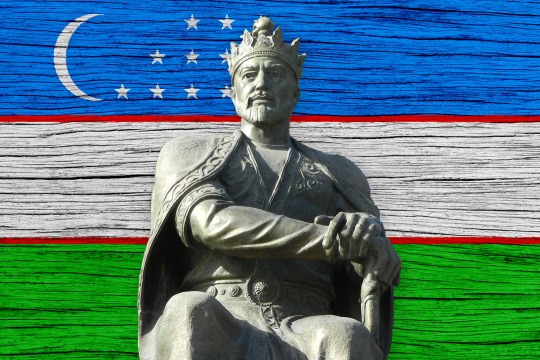
View On WordPress
0 notes
Text
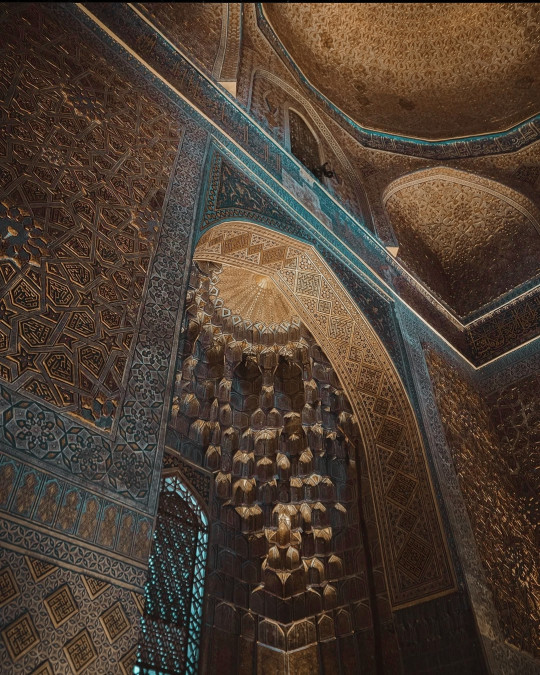
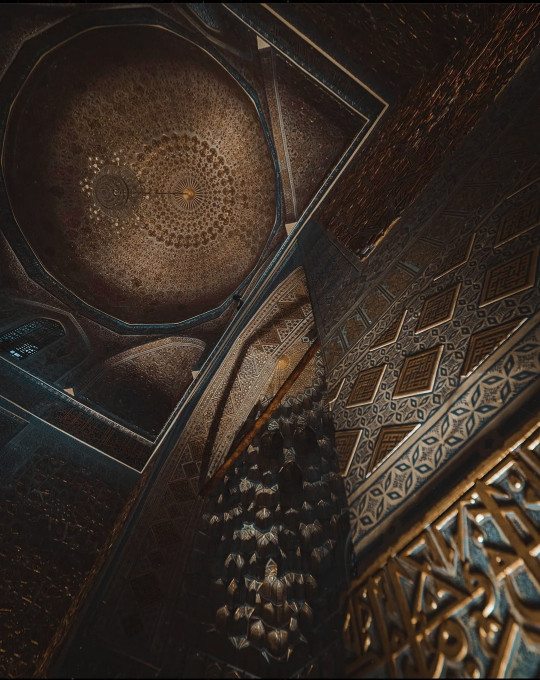
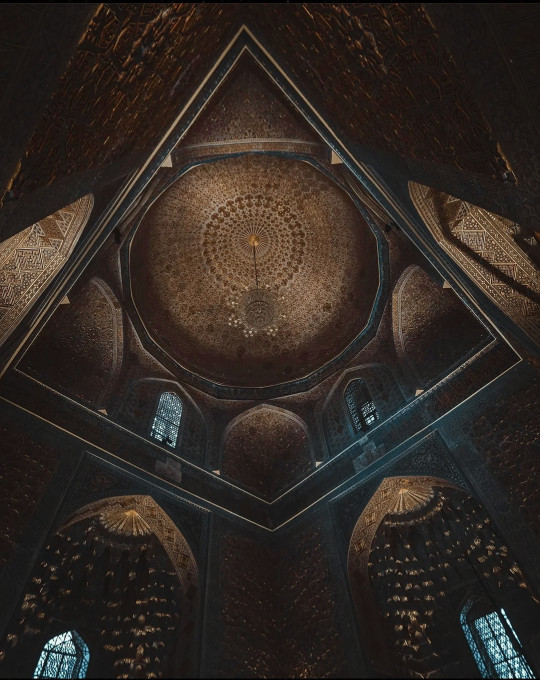

Gur-e-Amir by markepchteine.
#Gur-e-Amir#tamerlane#samarkand#uzbekistan#uzbek#alternative#aesthetic#dark academia#dark academic aesthetic#dark aesthetic#aestheitcs#dark#art#light acadamia aesthetic#light academia#tomb#amir temur#timur
2K notes
·
View notes
Photo

Gur-e-Amir
This is a mausoleum of the Asian conqueror Timur (also known as Tamerlane) in Samarkand, Uzbekistan. It occupies an important place in the history of Persian-Mongolian Architecture as the precursor and model for later great Mughal architecture tombs, including Gardens of Babur in Kabul, Humayun's Tomb in Delhi and the Taj Mahal in Agra, built by Timur's Persianised descendants, the ruling Mughal dynasty of North India. It has been heavily restored.
3 notes
·
View notes
Text
Photos: PM Imran Khan visits tombs of Imam Bukhari, Amir Taimoor in Samarkand
Photos: PM Imran Khan visits tombs of Imam Bukhari, Amir Taimoor in Samarkand
Prime Minister Imran Khan has shared pictures of his visit to Samarkand city of Uzbekistan and declared it as a wonderful experience. The premier during his visit to Samarkand offered Fateha at the mausoleums of the great Islamic scholar and muhaddith Hazrat Imam Bukhari (R.A) and the ruler of Timurid Empire Amir Timur. In his tweets today (Saturday), the premier said “It was a wonderful…

View On WordPress
#amir timur mausoleum#amir timur tomb#gur e amir mausoleum#imam bukhari grave#imam bukhari shrine#Imran khan visits amir timur tomb#Imran khan visits Imam bukhari tomb#Imran khan visits Samarkand
0 notes
Video
Samarqand, Uzbekistan
123 notes
·
View notes
Photo
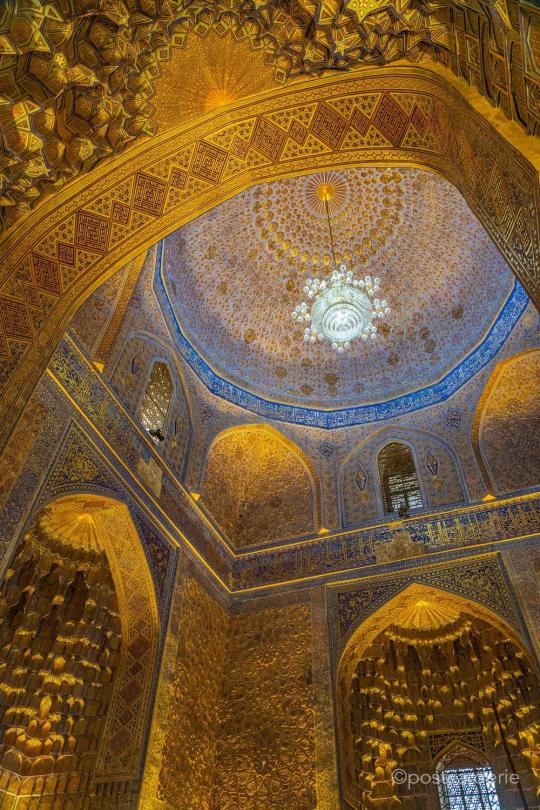
Interior of Gur-e-Amir (the tomb of Timur) in Samarkand, Uzbekistan via /r/ArchitecturePorn https://www.reddit.com/r/ArchitecturePorn/comments/ul2yp4/interior_of_gureamir_the_tomb_of_timur_in/?utm_source=ifttt
13 notes
·
View notes
Photo
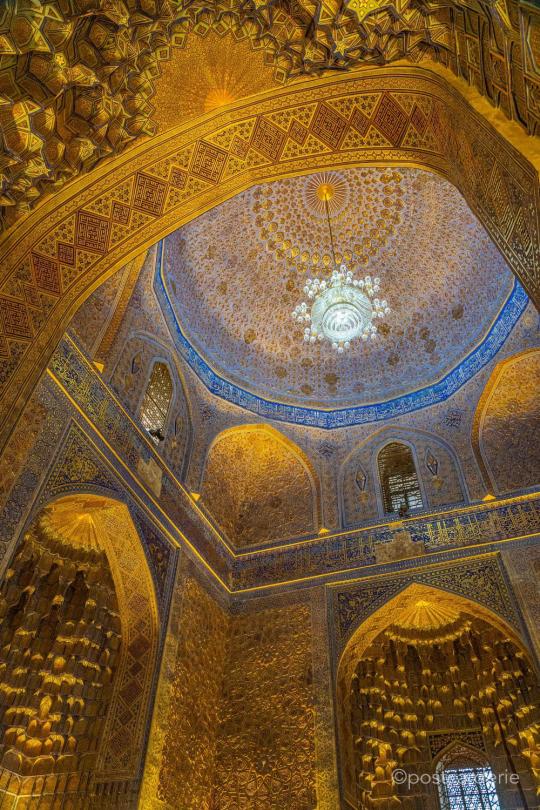
Interior of Gur-e-Amir (the tomb of Timur) in Samarkand, Uzbekistan
3 notes
·
View notes
Text
Samarkanda: La Perla dell’Uzbekistan tra storia, cultura e bellezza senza tempo.
Un viaggio nel cuore dell'Asia centrale per scoprire la città che incanta il mondo.
Un viaggio nel cuore dell’Asia centrale per scoprire la città che incanta il mondo. SAMARKANDA – Situata lungo l’antica Via della Seta, Samarkanda è una delle città più affascinanti e ricche di storia al mondo. Conosciuta come “la Perla dell’Uzbekistan”, questa città millenaria è un crocevia di culture, religioni e tradizioni, una testimonianza vivente della grandezza delle civiltà che l’hanno…
#Alessandria today#antiche civiltà#antiche rotte commerciali#architettura islamica#Asia centrale.#bazar Siab#caravane#ceramiche tradizionali#città millenarie#Città storiche#crocevia culturale#cucina uzbeka#cultura uzbeka#destinazioni turistiche#esplorazioni culturali#fascino orientale#Google News#italianewsmedia.com#lettori Alessandria Today#mausoleo Gur-e-Amir#mercati locali#monumenti iconici#Monumenti Storici#moschea Bibi-Khanym#ospitalità uzbeka#osservatorio Ulugh Beg#patrimonio UNESCO#Pier Carlo Lava#plov uzbeko#Registan Square
0 notes
Text

Gur-e Amir Mausoleum (15th century) Samarkand, Uzbekistan contains the tombs of Tamerlane, his children and grandchildren.
52 notes
·
View notes
Photo
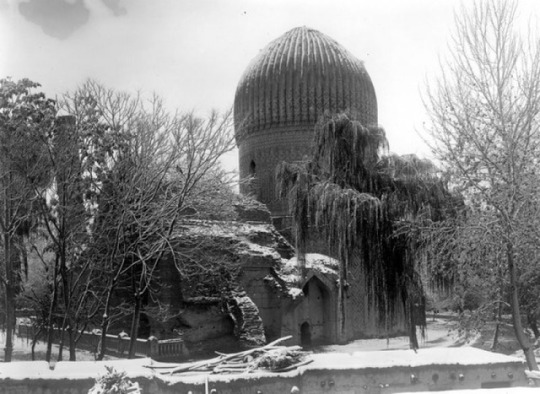
Gur-e-Amir, a mausoleum of the Asian conqueror Timur, Uzbekistan, 1896
24 notes
·
View notes
Text
1) Saint Petersburg Mosque 2) Esrefoglu Mosque
3) Shah-i-Zinda Necropolis 4) Gur-e-Amir Mausoleum




2K notes
·
View notes
Text
Taj Mahal
Taj Mahal Agra, Uttar Pradesh
The Taj Mahal, pronounced [ˈt̪aːdʒ mɛˈɦɛl], is also known as the "Taj". It is a tomb of conch shells. The Taj Mahal is considered one of the seven wonders of the world. Its craftsmanship and industrial ingenuity still make it an immortal building in India.
The main example of the Mughal artisans is the Taj Mahal, a collection of Persian, Turkish and Indian artisans.
Location ---
The Taj Mahal covers an area of about 221 hectares (552 acres). Of these, only the Taj Mahal is 38 hectares and the 138 hectares is the Taj Protected Forest Area.
Manufacturer--
Its creator is the famous Mughal emperor Shah Jahan. He built it in memory of his third wife, Mumtaz. It is considered to be the epitome of Muslim art in India and is also known as a major example of world history.
Another example of his luxury is the peacock throne. The "Persian" book, which details his daily life, provides evidence of his good governance, diligence, and patriotism.
Construction history and naming ---
The word Taj Mahal is just a translation of the word Mumtaz Mahal. Husband Mumtaz is the daughter of Asaph Khan, brother of Bhuvanmohini Nurjahan. Shah Jahan was ousted in 1612. In her 19-year marriage, she gave birth to 14 daughters. She is said to have heard her cries shortly before the last child was born. It is widely believed that if the mother hears the baby's cries, her death is inevitable. He was upset and told Shah Jahan. She died on Tuesday, June 7, 1631, after giving birth to her last child, Gauhara Begum, after suffering 30 hours of labor pains. Before her death, she made two requests to her husband, Emperor Shah Jahan: First, let her four sons be enthroned at the end of the emperor, and second, a grand burial temple should be built in her burial ground. Fulfilling his last wish, Shah Jahan built such an amazing palace and named it after Karan Mumtaz. Construction of the Taj Mahal began in 1932.
It is said that after Mumtaz's death, the luxurious Shah Jahan gave up all luxuries and led a normal life. He even visited Mumtaz's grave twice a day and turned his back on his other two wives and his royal affairs. Mumtaz's unhappy grief was the inspiration behind the construction of the Taj Mahal. To build a memorial to Mumtaz, he bought a large plot of land on the right bank of the Yamuna River from Mansingh's grandson Jayasinghe. A large number of Indian and foreign artists painted the palaces. Of these, the emperor chose his favorite design, and the construction of the Taj Mahal began in 1632 under the supervision of two officials, Mukaramat Khan and Mir Abdul Karim. The construction of the main palace was completed in 1648, but the construction of the surrounding palace and garden was completed. With a lot of money, Shah Jahan succeeded in making it a wonder of the world.
Persian crafts, as well as Mughal craftsmanship, were used in the construction of the Taj Mahal. The Timurid dynasty and some other Mughal buildings such as Gur-e-Amir (the tomb of Timur, the father of the Mughal dynasty at Samarkand), the tomb of Humayun, the tomb of Itmad-ud-Daila (some call it Shishu Taj), the Shahjahan-built Delhi Jail. Although the former Mughal buildings were mostly made of red stone, the Saha Jahan in the construction of the Taj Mahal was engraved with white shells of marble. Built under his auspices, these palaces have ushered in a new level of industrial cleverness reform.
Building materials--
Twenty precious stones, including conch shells, have been used in the construction of the crown. It is said that red stone was brought here in one lakh fourteen thousand carts from Fatehpur Sikri. Subsequently, the lower Mughal kings sent a large number of stone-like crowns for subordination. The people even donated stones instead of annual taxes, becoming the emperor's favorite hymn.
Feature, beauty and attraction--
There is a huge wall of red stone around the crown. The wall is 1240 feet long in the west and 667 feet wide in the north-south. The Kalindi River flows through the country at the foot of the wall. There are four towers on the four corners of the wall, and three arches on each side. The highest pillar is the main entrance to the Taj Mahal. At the top of the arch is a magnificent pillar, with 26 gold bowls lined up in a single row. As you cross the wall and enter through the arches, you can see a garden adorned with flowers, flowers, and flowers. It doubles the interior beauty of the Taj Mahal.
In order to make the peacock throne in the Taj Mahal look exactly like a living peacock, he painted the color stone he needed. He used a number of valuable items, such as diamonds, blues, and rubies, to revitalize the Taj Mahal. The foundation of the crown, the profession, the curtain, the roof, etc. are so skillfully built that it still looks like it was built some time ago. The subtle veins of the leaves, the hair of the flowers, the very subtle parts of the story are also described with great care. The various pieces of stone are so skillfully attached that it is a wooden lesson to grasp the pairs of them.
0 notes
Text
ok wait sorry im doing my reading for today right and i learned about gur e amir
or gur-i amir
ANYWAY
its in samarkand, uzbekistan and its where timur is buried
and it looks SO COOL ok we need to be FREE because im tired of staying in america i wanna SEE IT
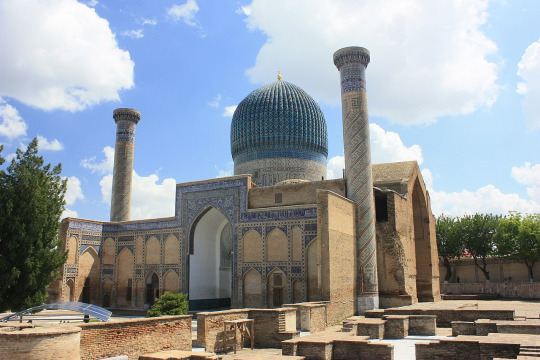
ALSO IM MAD bc i was reading this book and im like oh ok, i know these places, wow timur was an emperor why dont i remember learning about him
FUCKING
THE WEST-
anyway i learned about him as tamerlane, instead of timur, bc they were talking shit about his hand and leg being messed up
called him timur the lame-
0 notes